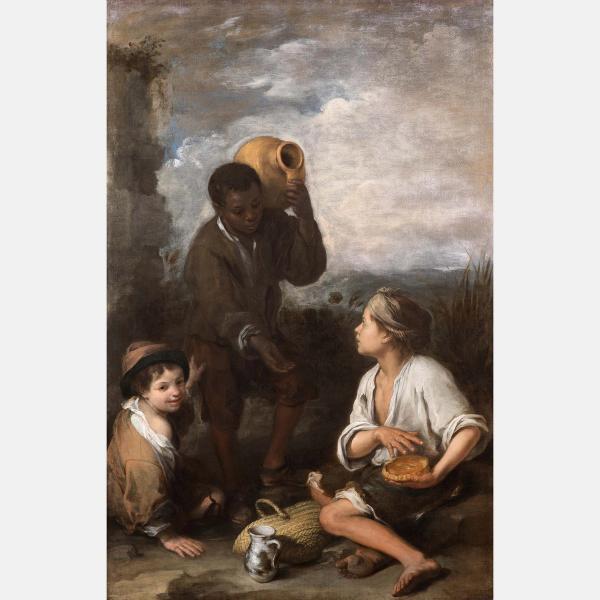Three Boys
Artwork Details
- Title: Three Boys
- Artist: Bartolomé Estebán Murillo (Spanish, Seville 1617–1682 Seville)
- Date: ca. 1670
- Medium: Oil on canvas
- Dimensions: 66 1/4 × 43 1/4 in. (168.3 × 109.8 cm)
- Classification: Paintings
- Credit Line: Trustees of the Dulwich Picture Gallery, London
- Curatorial Department: European Paintings
Audio

634. Three Boys, Bartolomé Estebán Murillo, 1670
MADELEINE HADDON: What maybe is most striking for many people is that the young Black boy that we see carrying the water jug is our main focus in this triangular composition that Murillo has laid out for us.
My name is Dr. Madeleine Haddon. I am a curator at the Victoria and Albert Museum in London.
Murillo’s piece is very rare in the sense that it's a Black figure who's not being depicted as some exotic kind of fantastical tale; but who we see occupying Murillo’s own historical moment.
NARRATOR: There’s a tension inherent in this image.
MADELEINE HADDON: For a long time, this painting was entitled The Black Beggar Boy, because it was assumed due to the incredibly racist attitudes of the time, that the Black boy must be the one who's begging and of a lower socioeconomic status than his white companions. But in fact, if we look closely, that’s far from the case. We can see that the Black boy is actually fairly well-dressed for the time. He has leather shoes with good sturdy soles and laces. He's much better dressed than his two companions, and what is much more likely is that Murillo intended the two boys seated on the ground as the ones who are begging and they have come across the standing boy and are trying to steal from him.
NARRATOR: While fictional, Murillo’s work offers a rare glimpse into the lives of people of African descent living in Seville.
MADELEINE HADDON: The rates of poverty in the city were incredibly high throughout the 17th century. And the number of people living like the boys we see here was incredibly rampant. I think including this painting within this exhibition gives us a important visual representation of what the experience and what the lives would have been like for the majority of Afro-Hispanic people living in Seville.